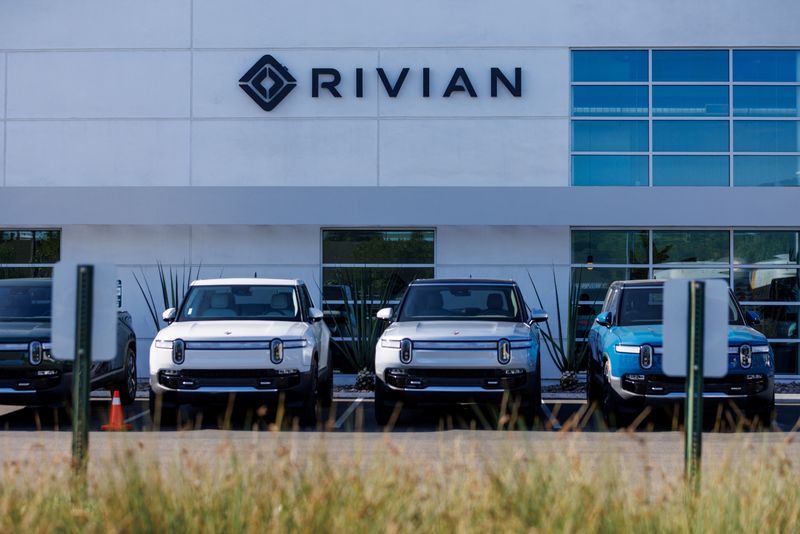Electric-vehicle manufacturer Rivian reiterated its 2024 production forecast, which is below analysts’ expectations, as it focuses on restarting production and reducing costs. The company recently upgraded its assembly line and reduced its capital expenditure forecast by $550 million to $1.2 billion. This move comes as Rivian looks to streamline operations and enhance efficiency at its Normal, Illinois plant. The decision to produce the more affordable R2 vehicles at its existing factory in Illinois instead of a proposed plant in Georgia is expected to save the company more than $2 billion in expenses.
Rivian is set to produce 57,000 units this year, falling short of analysts’ forecasts of 62,277 vehicles in 2024. The company has introduced a lower-cost variant of its R1T pickup truck and R1S SUV to generate demand in a market affected by high interest rates and a shift towards less expensive gasoline-hybrid vehicles. To reduce costs, Rivian has been renegotiating contracts with suppliers and manufacturing some parts in-house. The transition to new suppliers is aimed at accelerating production of the recently unveiled smaller, more affordable midsize R2 SUVs.
Despite a wider first-quarter loss, Rivian reported revenue of $1.2 billion, which surpassed analysts’ expectations of $1.16 billion. The company’s net loss increased to $1.45 billion in the quarter, compared to $1.35 billion the previous year. However, Rivian maintained that its cash and cash equivalents were $5.98 billion at the end of March, compared to $7.86 billion in the fourth quarter of the previous year. This financial stability will support the company in fulfilling its production targets and expansion plans in the coming months.
Shares of Rivian were down about 2% in after-hours trading following the announcement of its production forecast and financial results. The company’s decision to focus on restarting production and reducing costs in the wake of a shutdown last month has prompted mixed reactions from analysts and investors. While some view Rivian’s cost-cutting measures and production adjustments as necessary steps for long-term growth and sustainability, others are concerned about the company’s ability to meet demand and remain competitive in the rapidly evolving electric vehicle market.
Rivian’s move to shift production of the R2 vehicles to its Illinois plant demonstrates its commitment to optimizing operations and enhancing efficiency. By re-negotiating contracts with suppliers and bringing production in-house, the company aims to reduce costs and better control its supply chain. This strategic shift aligns with Rivian’s goal of increasing production capacity and expanding its product lineup to meet growing demand for electric vehicles in the market.
Looking ahead, Rivian’s success will depend on its ability to effectively manage production, reduce costs, and maintain a strong financial position. By aligning its production forecasts with its operational capabilities, the company aims to overcome challenges related to supply chain disruptions and changing market dynamics. With a focus on innovation and efficiency, Rivian is well-positioned to navigate the evolving landscape of the electric vehicle industry and capitalize on opportunities for growth and expansion in the years to come.


